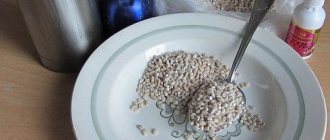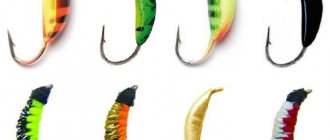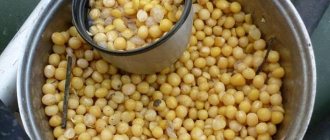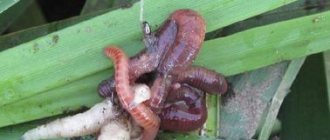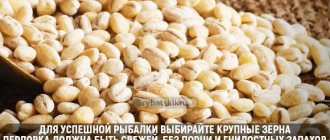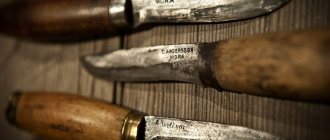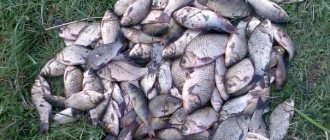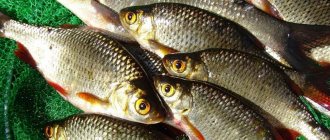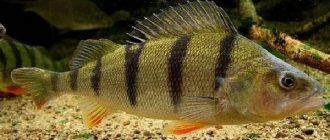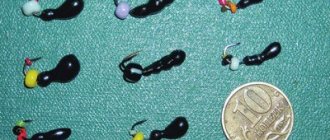Among the main components of the bait mixture, millet porridge takes pride of place. Catching bream and bream, roach, and other inhabitants of water bodies is not complete without golden grain. The fish are attracted by the bright color, the pronounced smell of grains in the form of a bait, and millet bait attracts even the most fastidious crucian carp. There are different options for preparing bait, differing in the degree of water evaporation, boiling, opening of grains, and addition of components.
How to cook millet for mastyrka fishing and for bait: recipes and tips
Millet has been actively used by fishermen for a very long time. This is one of the most common types of porridge, which is used in fishing as bait, and a little less often as bait for catching peaceful fish in the form of mastyrka. Porridge is an ingredient in many homemade baits that can be made from homemade ingredients.
Millet for bait
Why it is recommended to use millet for adding to the feeder is, of course, a matter of taste for each angler, but I personally believe that such a mixture is washed out of the feeder faster, attracting fish, and contains large enough fractions to keep the fish in place.
In the photographs and videos, you can see how each grain of millet is enveloped in a dry mixture and does not stick together with other grains. You can also use pearl barley for fishing, alone or in combination with millet or peas, but the overall mixture becomes more sticky and is difficult to leave the feeder even during the current.
If we are going to purposefully catch crucian carp or crucian carp, then it is better to use pearl barley. We have already talked about how best to prepare pearl barley for fishing as a bait and additive to the feeder. Barley is more to the taste of carp, and millet, in my opinion, is a more “universal” additive, which, along with carp and crucian carp, also attracts white fish.
Previously, I cooked millet porridge for bream in the standard way: take one and a half to two glasses of water per glass of cereal and cook until the grains swell (10-15 minutes of boiling). Then I left it to cool, and while fishing I added the porridge to the feeder in pieces, without stirring.
But such a mixture turned feeder fishing into something similar to fishing with a spring: the bait was not washed out for a long time, the porridge did not crumble well, its pieces became like a “congestion” in the feeder.
Now I’ve come to another method of cooking millet for fishing, which I want to introduce you to:
Millet as bait and as bait
Fish responds well to millet porridge. It has a pleasant yellowish tint and is clearly visible at the bottom, attracting underwater inhabitants.
Millet is added to bait as a feed part. In addition to aromatic ingredients and those that create turbidity and a trail at the bottom, the bait must contain food parts so that the fish have something to eat. Otherwise, she simply won’t stay on the point. The aroma and turbidity will attract fish, but if it doesn’t find anything at the point, then it won’t come to the point.
Millet porridge is made of different types as bait. Firstly, the porridge can be made crumbly, then it will be easily washed out of the feeder.
Individual millet grains are small, which works great for all types of fish. They are not as big as pearl barley, and even small fish can profit from it.
The grains are small and attract a variety of fish
But even larger fish will not refuse to eat millet porridge. Loose porridge is used for float fishing as bait. The porridge is mixed with other components of the bait, balls are formed from them and thrown into the fishing point. The balls at the bottom disintegrate and the millet at the bottom forms a beautiful, pronounced bait table.
Secondly, for bottom fishing with a nipple and flat feeder, the porridge is made of a sticky consistency. To do this, the porridge is boiled. The boiled millet acquires a homogeneous mass, which is then mixed with other binding elements and, when cooled, the resulting mastyrka can be sculpted and stuffed into a flat or pacifier.
Porridge suitable for a feeder - crushed millet can be used to fill a feeder, or can be used as a bait for crucian carp, bream, carp, roach in the form of a mastyrka
You can use this kind of mastyrka to make hook baits, which means millet is suitable for this role as well.
General tips for choosing porridge
Cereals must be chosen fresh. You should not buy millet if flour dust is visible at the bottom of the bag. This means that the cereal has been sitting for a long time, and the cooked cereal becomes bitter.
When choosing cereals, you should pay attention to its color. It can be bright yellow or paler. The bright yellow grain, thanks to the elements it contains, turns out to be crumbly. But pale grains produce a stickier product.
Before cooking, millet groats must be washed several times in warm water, this will remove the bitterness from the porridge and it will be more crumbly.
How to cook crumbly millet for fishing in a slow cooker and steam it in a thermos
Cooking porridge in a thermos can be called a method for the lazy. You just need to pour cereal and 3 times more boiling water into a thermos. Then close the thermos tightly. It should be good and not cool quickly, otherwise the cereal will not have time to steam. If this happens, you can pour boiling water again. The millet turns out very crumbly.
The second easy cooking option is a slow cooker. To obtain crumbly porridge, you also need to add cereal, add 2.5 times more water and select the required cooking mode. In 15 minutes, excellent fish food will be ready. The ease of this method is that you do not need to stand over the pan constantly monitoring the process; the porridge in the slow cooker will not burn.
Take more water than cereal
Recipe for millet porridge for feeder and groundbait
To prepare porridge that can be used in a feeder feeder and as bait, you need to get a fairly crumbly porridge. To do this, add 8 times more water than cereal to the pan. That is, for 2 glasses of cereal, take 4 liters of water.
The water is brought to a boil and the cereal is poured into it. You need to cook until the cereal stops crunching on your teeth. Next, the porridge is removed from the heat and washed in cold water several times. The result is a soft, but at the same time very crumbly feed component.
Loose millet can be used in both feeder feeders and feed balls
Recipe for making porridge for feeder fishing
- Pour a liter of water into the pan.
- When the water boils, add a glass of pearl barley and reduce the heat.
- After 10 minutes, add two glasses of millet.
- Add a packet of vanillin and a tablespoon of sunflower oil.
- Cook over low heat until the porridge has absorbed all the water.
- Turn off the heat and leave the porridge to cook for another 15 minutes.
- Add a glass of barley porridge and a glass of corn porridge, stir.
We also recommend that you familiarize yourself with the recipes for bait for crucian carp.
The crumbly porridge for feeder fishing is ready. You can watch the process of making such porridge in video format in this video below.
Flavors and flavoring additives for fishing porridge:
- Vanillin.
- Anise.
- Hemp grains.
- Ground seeds (makukha).
- Sunflower oil.
- Coriander.
- Cinnamon.
- Garlic.
- Ginger.
Recipes for catching different types of fish - how to flavor bait
Either bait or groundbait can be additionally flavored to attract specific fish. These flavors can be added during the preparation of porridge, when it is just boiling.
Crucian carp responds well to fairly strong aromas. This could be garlic, turmeric, which will additionally color the bait yellow.
Crucian carp also loves cooked millet porridge - millet with garlic is one of the best baits for crucian carp fishing
For bream, flavorings should be used carefully. In cold weather, strong aromas can scare away fish. During the warm season, bream prefers sweet aromas, so vanillin can be added as a flavoring agent.
A good supplement option for catching roach is coriander. It works especially well in cold weather, but roach responds well to it in summer too.
You can also use this grain in carp fishing. The best flavor options for bait would be strawberry and other fruit flavors, and in cold water, spicy flavors.
How to cook millet for fishing to prepare bait for catching carp, crucian carp and other types of fish:
Source
How to cook
Preparing this grain for fishing does not require much time and is easy to cook just before going out to the pond. Methods for cooking millet for fishing depend on its purpose.
Millet as a bait
A significant disadvantage of this product is its low adhesiveness. Lumps made even from overcooked grains do not stick well to the hook. But the problem is easily solved with the help of available supplements.
Tips for a fisherman: What fishing line to use on a bream feeder - Let's break it down step by step
A proven way to prepare millet for bait is to boil the cereal in milk. First, millet porridge is cooked in the usual way (as for yourself). As the milk boils into the porridge, you can add a little hemp, sunflower or anise oil and sugar. You need to make sure that the porridge does not burn (this smell scares away fish) and if necessary, you need to add milk or water.
After cooling, lumps form from boiled millet. To increase stickiness, wheat flour and cotton wool fibers are gradually added. The density of the nozzle is determined experimentally: the plucked pieces should roll into balls and have sufficient viscosity.
The nozzle should be stored in a plastic bag or in a tightly sealed container. If you need to soften the bait while fishing, you can add a little water like in fishing dough. You should not overuse flavorings, as their excessive smell can scare away fish and attract cancer, and it can turn fishing into a boring and unpromising activity. Although without fish...
Millet as a component of bait
Millet porridge is excellent for bait when fishing with bottom gear, which uses various feeders. Boiled millet is quickly washed out of the feeder and delays the approaching fish for a long time. Usually pearl barley for fishing, chopped worms, small bloodworms, etc. are used with millet.
Preparing millet as complementary food is quite simple. To do this, add the cereal to boiling water and cook until tender. The volume of water should exceed the volume of cereal by approximately 7-8 times. If necessary, water can be added during the cooking process.
When ready, the resulting porridge is cooled under cold water. Upon arrival at the reservoir, cooked millet may form into lumps, but they are easily destroyed by hand. You shouldn’t pack the feeder tightly, because the complementary food should spread quickly enough. When fishing on a current, there are usually no problems, but in still water it is advisable to use additional ingredients, including bottom silt.
The nozzle should be stored in a plastic bag or in a tightly sealed container. If you need to soften the bait while fishing, you can add a little water like in fishing dough. You should not overuse flavorings, as their excessive smell can scare away fish and attract cancer, and it can turn fishing into a boring and unpromising activity.
How to cook millet
Boiled millet is the basis on which a variety of baits are prepared for catching almost any peaceful fish. There are a lot of recipes, but the main thing is to cook the millet correctly.
Many fishermen prepare millet for fishing in the same way as millet porridge: pour a small amount of water over the millet and cook until the millet completely swells and absorbs all the water.
It turns out well, but such millet is unsuitable for fishing - in bait it sticks together into insoluble lumps that lie on the bottom like dead weight. However, such millet can be used to prepare millet-flavored bait, but more on that a little later. First, about how to properly cook millet for bait.
What kind of millet should be used in bait?
Millet for bait must be prepared in such a way that the small fractions that make up the feed break the millet into individual grains, evenly enveloping it.
Getting into the water in the form of a spherical lump or being in a feeder, such bait gradually breaks down into separate fractions and forms a feeding spot. At the same time, if this is provided for in the recipe, a cloud of suspension is formed, which collects fish from great distances and stimulates its appetite. Individual particles of millet keep feeding fish in the fishing zone for a long time.
How should you cook millet to get this effect? You need to cook millet for fishing in a large amount of water and for a certain time.
How much water
It was experimentally established that the ratio of water to millet should be at least eight to one (8/1). That is, for example, one glass of millet will require at least eight glasses of water, which is two liters.
If the millet is contaminated, it should be washed before cooking.
After the millet is ready, the excess water is drained, and the millet is used for bait, or is additionally washed to remove gluten residues in order to obtain maximum friability. This depends on how and why the bait will be prepared and what ingredients will be used in it besides millet.
How long to cook
Millet is immersed in water after it has boiled. Eight minutes after boiling, the millet grains begin to soften, and after fifteen minutes, they open almost completely, and the millet can be considered ready. At the same time, the volume of millet increases approximately four times.
You can cook millet for fishing in this time range (from 8 to 15 minutes), stirring from time to time and monitoring the degree of cooking. Then, the millet is drained with water in a colander, and after the water has drained, it is ready for use in bait.
For winter fishing, the most crumbly millet is usually prepared and boiled for 8-10 minutes. For feeder fishing, more boiled grains are needed, so the cooking time will be approximately 15 minutes. Millet in bait for float fishing is cooked for 10 to 15 minutes.
Let's summarize:
Note: Ready millet is a wet mass that quickly spoils, so after cooking, cool it and put it in the refrigerator before fishing. With rare exceptions, it is best to mix millet with dry ingredients in a pond.
Watch a short video on how to cook millet for use in bait:
How to cook millet for feeding fish
An important condition for successful cooking is the quality of the cereal. Millet should be selected for its bright color, without the smell of rot. Good grains do not contain impurities or require washing and cleaning.
The cooking process differs from traditional cooking of porridge, when washed cereals are poured with a small volume of water and cooked until the grains are completely swollen. If sticky lumps form, then such a base is not suitable for bait. A viscous mass with excess gluten will not help your fishing become catchy. An exception is the preparation of baits, where the requirements for feed mass are different.
The friability of millet is one of the conditions for the attractiveness of bait to stimulate the fish’s appetite. The inhabitants of reservoirs sense the smell of the particles that make up the porridge from afar. In stagnant water, the aroma spreads due to a slight current due to the temperature difference between the upper and lower layers.
You can achieve the desired consistency of the mass for filling the feeders by boiling it in a large volume of water, 5-6 times the volume of millet. So, for a glass of cereal you will need about 2 liters of liquid.
Cooking process:
- Bring water to a boil over high heat;
- add cereal, reduce heating temperature;
- Stir the mixture during cooking, you can leave the foam.
Readiness manifests itself when the cereal is boiled, even before the grains are fully opened. The container can be removed from the heat and the water drained through a sieve or fine colander.
The result of preparing the bait depends on the cooking time and the nuances of processing the finished porridge. There are several main options.
The main component of bait. Millet porridge
Millet bait
There are a huge number of millet-based bait recipes. Any experienced angler can create his own recipe that will work best in certain conditions.
We will share with you several proven methods for preparing millet bait that definitely work. Well, you can change and modify the composition at your own discretion.
Simple option
The easiest way to use millet is to mix it with ready-made bait from the store.
Preparing the right millet bait
For a good catch, it is not enough to prepare millet correctly; you need to know how to use it correctly. Fishing for crucian carp will be successful when bait of the correct thickness with well-selected ingredients is used. The bait should include various components, only in this case it will give a good result. Within 5 minutes, the bait should be washed out of the feeder and form a food cloud or spot that attracts fish.
To get a food cloud, you need to add breadcrumbs to the millet porridge. To form a food spot at the feeding point, it is recommended to add large ingredients to the bait - peas, pearl barley. Millet is a universal ingredient that can form both a food cloud and a food spot. The effectiveness of millet can be tested experimentally; to do this, it must be prepared using the proposed technologies.
How to prepare bait from millet for catching crucian carp on a feeder - you will learn this from the video:
Millet nozzle
A millet-based bait is successfully used for catching crucian carp, roach, bream and any other fish using a float rod and bottom tackle. The following is added to millet attachments:
It is allowed to include coarse fractions.
In preparing millet bait, two main approaches are used:
Nozzle recipe No. 1
Boiled millet dough:
Additives in the form of spices or flavorings that are suitable for fishing in a particular body of water are mixed into the dough. If you use semolina, then it is better to add it to the still hot millet.
The nozzle is allowed to sit quietly for several hours in the refrigerator, after which it is thoroughly mixed again - the result is a more elastic and elastic mass.
Nozzle recipe No. 2
Millet flour dough:
If desired, flavoring and aromatic additives, which we discussed above, are added to the millet dough. But, do not overuse the amount of flavors and do not mix different types of scents.
In conclusion: Millet is a very convenient and inexpensive material for preparing baits and baits that are very effective at attracting any peaceful fish. But only if it is prepared correctly.
Happy fishing, no tail, no scales!
Source
How to properly cook millet for fishing
You don’t have to go fishing without bait, especially when you don’t have enough experience in this matter yet. Speaking about the delicacy that people make with their own hands, bait made from millet has become very popular - it is impossible to ignore it. True, the nuance is that you still need to know how to cook this porridge so that it turns out aromatic and tasty.
Important! Fish are attracted not only by the smell, but also by the size of the pellets, their shape, and color.
Therefore, these important points cannot be ignored, because fishing can be wasted. If everything is done correctly, the fish will begin to eat the goodies, and therefore will easily get hooked.
Millet for fishing - what is it like?
At first glance, it may seem that everyone only uses millet for bait and it doesn’t go anywhere else. In fact, they also make fillings for feeders from cereals; these small grains are added to the porridge, which serves as a tasty topping.
Depending on the purpose, it is necessary to properly cook millet for fishing, because the final result depends on this.
It should be noted that if you need to prepare crumbly cereal, then it must be whole grain, otherwise you need to cook the porridge until it is completely boiled and turns into a sticky mass.
Millet is preferred by a large number of different types of fish, so you can easily cook porridge from it. There is nothing surprising in this, since the yellow color of the delicacy is clearly visible in the water. And it should be noted that to prepare porridge you don’t even need to add any dyes to attract fish. As for the pleasant aroma, it spreads over several meters, so fish can hear it from afar.
Particular attention should also be paid to the grain structure. If you cook porridge using other grains, which will dissolve in water and there will be nothing left of them, then the seemingly small millet will catch the eye of the fish. In addition, it floats on the surface for quite a long time, attracting more and more new fish.
It is worth saying that fishermen are frightened by the fact that, having had their fill, the river inhabitants will swim away, leaving a person without a catch. To prevent this from happening, they add flavorings, but those that do not attract fish, but rather repel them a little, which ensures interest in the bait, but at the same time prevents gluttons from quickly filling their stomachs.
Millet for fishing. Recipe.
For one pack of millet (900 grams) you need to take one liter of water. We put the water on the fire and after boiling you need to add a little salt. Then add a little refined oil (a teaspoon) to the water.
But no more - this is quite important! It’s better to forget to add it altogether than to overfill it.
Pour millet into boiling water and do not forget to stir constantly. If the porridge burns, throw it away and cook again! Foam will form during the cooking process; it does not need to be removed. Reduce heat to low and cover the pan with a lid. Millet should be cooked for 8 - 10 minutes. Then turn off the heat and try to knead the millet with your hand. The composition should be sticky on the outside, but remain solid on the inside. This is the consistency we need! If you think that the millet is not ready yet, then close the pan with a lid and let it brew without heat for about 20 minutes.
Once cooled, you should have a fairly dry mixture that can be broken off and crumbled. So I add half a pack of dry store-bought bait to this millet.
This mixture is quite crumbly, but at the same time it is very easy to form a ball from it.
I hope you find this simple recipe for preparing millet for fishing useful! And you will be satisfied with the result! And just below you can enjoy a video of catching crucian carp and white bream on millet.
Porridge recipes depending on the current
Of all the grains, millet is the one with which you can attract different types of fish. Many anglers chase white fish, which live both in still water and in the current. At the same time, porridge for different rivers must be cooked differently.
If we are talking about standing water, then the porridge must be crumbly. The stuck together option will not work. Next, you will need to sprinkle the cereal a little with dry food.
This could be:
The essence of the bait is that the mixture is well soaked and spread, and then the fish smell it.
In cases where bait is needed for the current, completely different tricks should be used and the porridge should be prepared differently.
In order for the porridge to brew well, it is wrapped in something warm.
If there is a weak current on the river, the above recipe can also be used, but only in this case another portion of rolled oats is added to the mixture, which must first be steamed (
Millet for fishing - cook it correctly
Fishing is quite an exciting process, from which most men of different age categories receive incredible pleasure. However, often not only beginners, but also experienced fishermen ask themselves the pressing question: how to cook millet for fishing? After all, the future catch depends entirely on the correctness of its preparation.
Today, millet is widely used as a universal bait.
In most cases, fishermen use standard technology during the cooking process, which allows them to create a truly crumbly mass, ideal for catching fish. This article provides detailed information regarding the features of preparing porridge.
Cooking millet using the “1 thumb” method
This method is not ideal, but it is simple (for the slightly lazy) and, in principle, working. Especially if the millet is cooked for feeding balls . It is recommended in a feeder feeder only as an addition to the main bait, as a large fraction for retention .
Tips for a fisherman: How to make a side fishing rod for bream - All the nuances
For carp fishing, it is still better to cook it the first way, and undercook it a little, as for winter bait. Undercooked grains are much easier to “mix” with other grains.
Now to the recipe.
If you go fishing on the eve, you can get there quickly enough—you don’t have to put it in the refrigerator. In other cases, refrigerate after cooling.
You can also cook porridge directly while fishing this way. All you need is to have the right tool.
Original recipe:
I think this recipe should be immortalized on my website. I will give here the original text in order to preserve everything exactly as it was once written by Igor.
Original recipe:
"Lazy" recipe:
After this, the millet has an excellent consistency. Mix it with any bait or cake, and you get an excellent bait composition for fishing.
Hi all! I decided to post my own recipe on how to cook millet for fishing.
I don’t wash the millet, so it’s quick and not tedious. Minimal time investment. Many people, I have seen, wash it for a very long time before cooking it. I don't understand why. Millet already performs great when fishing.
Actually, we need the following ingredients: millet, water and a saucepan. Take millet and fill it with water. After boiling, cook for three to five minutes, depending on the amount of cereal.
After this, the millet has an excellent consistency. Mix it with any bait or cake, and you get an excellent bait composition for fishing.
The entire process is on video. Enjoy watching everyone!
Millet recipe for fishing
The resulting millet bait must be filtered through a sieve so that the grains are separated. The resulting mixture is mixed into dry bait. This mixture does not require additional flavorings.
Cooking features
Before you begin directly preparing fish food, you need to familiarize yourself with the basic rules for implementing this process, which includes three stages. First you need to boil the cereal and cool well.
But here, too, not everything is as simple as it seems at first glance, because without the necessary knowledge you can create a compressed lump that is completely unsuitable directly for fishing.
Technology for preparing millet for fishing for bait:
It is very important not to overcook future bait. In fact, the implementation of the entire hot technology takes no more than ten to fifteen minutes. And this period should not be exceeded or shortened. It is worth remembering that overcooked mass is a guarantee of failed fishing.
Features of creating crumbly bait that every angler should know about:
To get a really crumbly mass, and not a glued lump, you need to take cold water and cereal in a ratio of 7:1. Washing is carried out several times until the millet is completely cooled. The next stage is adding bait.

